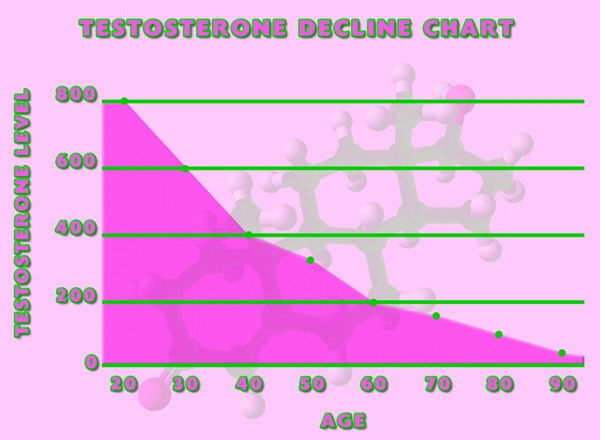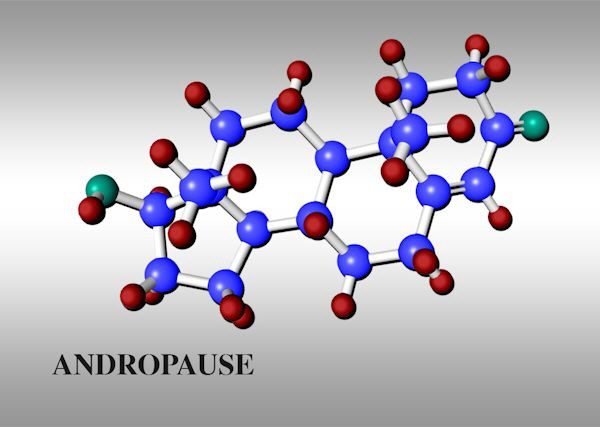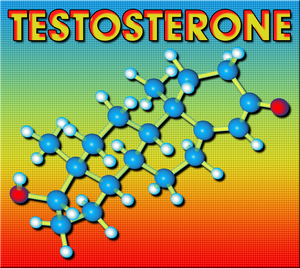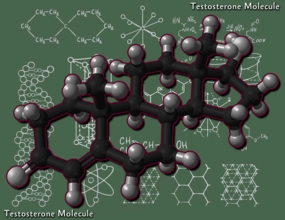Introduction to Tamoxifen
Tamoxifen, a pivotal drug in the realm of oncology, has significantly altered the landscape of cancer treatment, particularly for hormone receptor-positive cancers. Originally developed in the 1960s, Tamoxifen has become a cornerstone in the management of breast cancer, a disease that, while less common in men than in women, still poses a significant health risk to American males. This article explores the revolutionary impact of Tamoxifen on hormone therapy and its specific relevance to male patients.
Mechanism of Action
Tamoxifen operates as a selective estrogen receptor modulator (SERM). Its primary function is to compete with estrogen for binding sites on estrogen receptors in breast tissue. By doing so, Tamoxifen effectively blocks the proliferative effects of estrogen on cancer cells, which are often dependent on this hormone for growth. This mechanism is particularly crucial for men, as male breast cancer cells can also be estrogen-sensitive, despite the lower overall levels of estrogen in men compared to women.
Clinical Impact on Male Breast Cancer
In the context of male breast cancer, Tamoxifen has been a game-changer. Studies have shown that men treated with Tamoxifen experience improved survival rates and reduced recurrence of the disease. The drug's ability to inhibit estrogen activity is vital, as male breast cancer, though rare, often presents with hormone receptor-positive characteristics similar to those seen in female breast cancer. The introduction of Tamoxifen into treatment regimens has provided American men with a more effective and targeted approach to managing this condition.
Side Effects and Management
While Tamoxifen has proven to be highly effective, it is not without side effects. Common issues include hot flashes, mood swings, and an increased risk of blood clots. For American men, who may be less accustomed to discussing such symptoms, it is crucial to foster an open dialogue with healthcare providers to manage these side effects effectively. Regular monitoring and adjustments to the treatment plan can help mitigate these risks, ensuring that the benefits of Tamoxifen continue to outweigh its potential drawbacks.
Preventive Use and Risk Reduction
Beyond its role in treating existing cancers, Tamoxifen has also been explored for its potential in preventing breast cancer in high-risk individuals. For American men with a family history of breast cancer or those carrying genetic mutations such as BRCA2, Tamoxifen can serve as a preventive measure. By reducing the risk of developing hormone receptor-positive breast cancer, Tamoxifen offers a proactive approach to cancer care, empowering men to take control of their health.
Future Directions and Research
The success of Tamoxifen has spurred ongoing research into other SERMs and hormone therapies. Scientists are continually exploring ways to enhance the efficacy of these treatments while minimizing side effects. For American men, this means a future where cancer treatment is not only more effective but also more tailored to individual needs. The legacy of Tamoxifen serves as a foundation for these advancements, promising a new era in cancer care.
Conclusion
Tamoxifen has undeniably revolutionized hormone therapy for cancer, offering American men a powerful tool in the fight against breast cancer. Its ability to target hormone receptor-positive cancers has improved outcomes and provided hope for those affected by this disease. As research continues, the impact of Tamoxifen will likely extend even further, solidifying its place as a cornerstone of modern oncology.
Contact Us Today For A Free Consultation

- Tamoxifen's Role in Reducing Breast Cancer Recurrence in American Males [Last Updated On: February 22nd, 2025] [Originally Added On: February 22nd, 2025]
- Unveiling the Complexity of Tamoxifen Side Effects: A Professional Medical Review [Last Updated On: March 2nd, 2025] [Originally Added On: March 2nd, 2025]
- Exploring Tamoxifen: Mechanisms, Applications, and Considerations in Hormone Receptor-Positive Breast Cancer Treatment and Beyond [Last Updated On: March 3rd, 2025] [Originally Added On: March 3rd, 2025]
- Unveiling Tamoxifen: A Revolutionary Approach to Combat Breast Cancer in American Men [Last Updated On: March 4th, 2025] [Originally Added On: March 3rd, 2025]
- Exploring Long-Term Tamoxifen Use and Effects in American Males [Last Updated On: March 4th, 2025] [Originally Added On: March 4th, 2025]
- Exploring Tamoxifen's Role in Male Health: Therapy and Side Effects Management [Last Updated On: March 5th, 2025] [Originally Added On: March 5th, 2025]
- Exploring Tamoxifen's Role in Treating Hormone-Sensitive Cancers Among Adolescents [Last Updated On: March 6th, 2025] [Originally Added On: March 6th, 2025]
- Tamoxifen in Male Breast Cancer: Efficacy, Side Effects, and Future Directions [Last Updated On: March 7th, 2025] [Originally Added On: March 7th, 2025]
- Unveiling Tamoxifen Resistance in Male Breast Cancer: Mechanisms, Challenges, and Future Strategies [Last Updated On: March 8th, 2025] [Originally Added On: March 8th, 2025]
- Exploring Tamoxifen's Role Pre and Post-Surgery: Benefits, Safety, and New Applications [Last Updated On: March 9th, 2025] [Originally Added On: March 9th, 2025]
- Unveiling the Molecular Mechanisms of Tamoxifen in Treating Hormonal Cancers Among American Males [Last Updated On: March 11th, 2025] [Originally Added On: March 11th, 2025]
- Optimizing Tamoxifen Dosage for Effective Breast Cancer Treatment in American Males [Last Updated On: March 12th, 2025] [Originally Added On: March 12th, 2025]
- Tamoxifen's Potential in Pediatric Oncology: Hope for American Males [Last Updated On: March 13th, 2025] [Originally Added On: March 13th, 2025]
- Unveiling the Risks: A Comprehensive Look at Long-Term Tamoxifen Use in American Males [Last Updated On: March 15th, 2025] [Originally Added On: March 15th, 2025]
- Tamoxifen: Understanding Its Role in Male Breast Cancer Treatment and Prevention [Last Updated On: March 16th, 2025] [Originally Added On: March 16th, 2025]
- Tamoxifen Side Effects in American Males: Management and Coping Strategies [Last Updated On: March 17th, 2025] [Originally Added On: March 17th, 2025]
- Tamoxifen: Benefits and Side Effects for American Males in Breast Cancer Treatment [Last Updated On: March 18th, 2025] [Originally Added On: March 18th, 2025]
- Tamoxifen's Impact on Men's Health: Benefits, Risks, and Management Strategies [Last Updated On: March 19th, 2025] [Originally Added On: March 19th, 2025]
- Tamoxifen Interactions in American Males: Optimizing Breast Cancer Treatment [Last Updated On: March 19th, 2025] [Originally Added On: March 19th, 2025]
- Tamoxifen's Role in Reducing Breast Cancer Mortality in American Men [Last Updated On: March 19th, 2025] [Originally Added On: March 19th, 2025]
- Tamoxifen's Expanding Role in Men's Health: Breast Cancer, Prostate, and Infertility [Last Updated On: March 20th, 2025] [Originally Added On: March 20th, 2025]
- Tamoxifen's Role in Inhibiting Cancer Growth: Implications for American Males [Last Updated On: March 20th, 2025] [Originally Added On: March 20th, 2025]
- Tamoxifen in American Males: Benefits and Challenges in Recurrent Cancer Treatment [Last Updated On: March 21st, 2025] [Originally Added On: March 21st, 2025]
- Tamoxifen's Journey: From Contraceptive to Male Breast Cancer Treatment [Last Updated On: March 21st, 2025] [Originally Added On: March 21st, 2025]
- Tamoxifen's Role in Hormone Therapy for American Males: Benefits and Considerations [Last Updated On: March 21st, 2025] [Originally Added On: March 21st, 2025]
- Tamoxifen's Role in Treating and Preventing Male Breast Cancer: Insights and Advances [Last Updated On: March 22nd, 2025] [Originally Added On: March 22nd, 2025]
- Tamoxifen's Efficacy in Treating Male Breast Cancer: Clinical Insights and Future Directions [Last Updated On: March 22nd, 2025] [Originally Added On: March 22nd, 2025]
- Tamoxifen in American Males: Benefits, Risks, and Considerations for Breast Cancer Treatment [Last Updated On: March 22nd, 2025] [Originally Added On: March 22nd, 2025]
- Tamoxifen's Impact on Bone Health in American Males: Strategies for Prevention and Management [Last Updated On: March 23rd, 2025] [Originally Added On: March 23rd, 2025]
- Tamoxifen's Potential in Treating Rare Cancers: Insights and Implications for American Males [Last Updated On: March 23rd, 2025] [Originally Added On: March 23rd, 2025]
- Tamoxifen Drug Interactions in American Males: Clinical Management and Optimization [Last Updated On: March 23rd, 2025] [Originally Added On: March 23rd, 2025]
- Tamoxifen's Potential in Leukemia Treatment for American Males: Mechanisms and Clinical Insights [Last Updated On: March 23rd, 2025] [Originally Added On: March 23rd, 2025]
- Tamoxifen's Emerging Role in Treating Endocrine Cancers in American Males [Last Updated On: March 23rd, 2025] [Originally Added On: March 23rd, 2025]
- Tamoxifen's Role in Treating Male Breast Cancer: Benefits and Management [Last Updated On: March 24th, 2025] [Originally Added On: March 24th, 2025]
- Tamoxifen: Hope and Strategy for American Men with Breast Cancer [Last Updated On: March 24th, 2025] [Originally Added On: March 24th, 2025]
- Tamoxifen: A Vital Tool in Managing Men's Health Challenges [Last Updated On: March 24th, 2025] [Originally Added On: March 24th, 2025]
- Tamoxifen's Role in Treating and Preventing Male Breast Cancer: A Comprehensive Guide [Last Updated On: March 24th, 2025] [Originally Added On: March 24th, 2025]
- Tamoxifen: A Key Treatment for Breast Cancer in American Males [Last Updated On: March 25th, 2025] [Originally Added On: March 25th, 2025]
- Tamoxifen's Role in Treating Hormone-Sensitive Cancers in American Males [Last Updated On: March 25th, 2025] [Originally Added On: March 25th, 2025]
- Exploring Tamoxifen Alternatives for Male Breast Cancer Treatment in American Males [Last Updated On: March 25th, 2025] [Originally Added On: March 25th, 2025]
- Tamoxifen's Dual Impact on Ovarian Function: Fertility and Menopause Considerations [Last Updated On: March 25th, 2025] [Originally Added On: March 25th, 2025]
- Tamoxifen's Role in Treating Gynecomastia: Efficacy and Considerations for American Males [Last Updated On: March 25th, 2025] [Originally Added On: March 25th, 2025]
- Tamoxifen's Role in Male Breast Cancer: Efficacy, Myths, and Adherence in the US [Last Updated On: March 25th, 2025] [Originally Added On: March 25th, 2025]
- Tamoxifen: From Fertility Drug to Cancer Treatment in American Males [Last Updated On: March 26th, 2025] [Originally Added On: March 26th, 2025]
- Tamoxifen in Male Cancer Care: Benefits, Risks, and Future Directions [Last Updated On: March 26th, 2025] [Originally Added On: March 26th, 2025]
- Personalized Tamoxifen Therapy Enhances Breast Cancer Treatment for American Men [Last Updated On: March 26th, 2025] [Originally Added On: March 26th, 2025]
- Tamoxifen: Essential Facts and Benefits for American Males with Breast Cancer [Last Updated On: March 26th, 2025] [Originally Added On: March 26th, 2025]
- Tamoxifen in American Men: Benefits, Risks, and Long-Term Health Implications [Last Updated On: March 26th, 2025] [Originally Added On: March 26th, 2025]
- Tamoxifen's Role in Treating Male Breast Cancer: Molecular Insights for American Men [Last Updated On: March 26th, 2025] [Originally Added On: March 26th, 2025]
- Tamoxifen Therapy for Advanced Hormone-Sensitive Cancers in American Males: Benefits and Risks [Last Updated On: March 26th, 2025] [Originally Added On: March 26th, 2025]
- Tamoxifen Therapy: A Preventive Approach to Breast Cancer in High-Risk Men [Last Updated On: March 27th, 2025] [Originally Added On: March 27th, 2025]
- Strategies to Overcome Tamoxifen Resistance in American Males with Breast Cancer [Last Updated On: March 27th, 2025] [Originally Added On: March 27th, 2025]
- Tamoxifen: A Key Treatment for Advanced Breast Cancer in American Men [Last Updated On: March 27th, 2025] [Originally Added On: March 27th, 2025]
- Tamoxifen Use and Cataract Risk in American Males: A Comprehensive Analysis [Last Updated On: March 27th, 2025] [Originally Added On: March 27th, 2025]
- Tamoxifen's Molecular Dynamics and Therapeutic Benefits for American Males [Last Updated On: March 27th, 2025] [Originally Added On: March 27th, 2025]
- Tamoxifen's Role in Transforming Male Breast Cancer Treatment in America [Last Updated On: March 27th, 2025] [Originally Added On: March 27th, 2025]
- Tamoxifen's Role in Managing Estrogen Fluctuations in American Males: Benefits and Considerations [Last Updated On: March 27th, 2025] [Originally Added On: March 27th, 2025]
- Tamoxifen Use and Depression in American Men: A Critical Oncology Concern [Last Updated On: March 28th, 2025] [Originally Added On: March 28th, 2025]
- Tamoxifen: Gold Standard in Male Breast Cancer Treatment and Its Long-Term Benefits [Last Updated On: March 28th, 2025] [Originally Added On: March 28th, 2025]
- Tamoxifen in Early-Stage Breast Cancer Treatment for American Males: Overview and Management [Last Updated On: March 28th, 2025] [Originally Added On: March 28th, 2025]
- Genomic Predictors of Tamoxifen Response in American Males with Breast Cancer [Last Updated On: March 28th, 2025] [Originally Added On: March 28th, 2025]
- Tamoxifen's Role in Treating Male Breast Cancer: Efficacy and Considerations for American Men [Last Updated On: March 29th, 2025] [Originally Added On: March 29th, 2025]
- Tamoxifen's Potential in Treating Advanced Hormonal Cancers in American Males [Last Updated On: March 29th, 2025] [Originally Added On: March 29th, 2025]
- Tamoxifen Toxicity in American Males: Mechanisms, Risks, and Management Strategies [Last Updated On: March 31st, 2025] [Originally Added On: March 31st, 2025]
- Tamoxifen's Endocrine Effects on American Male Breast Cancer Patients: Insights and Management [Last Updated On: April 1st, 2025] [Originally Added On: April 1st, 2025]
- Tamoxifen: A New Hope for Male Fertility in American Men [Last Updated On: April 1st, 2025] [Originally Added On: April 1st, 2025]
- Tamoxifen Therapy in American Males: Molecular Determinants and Personalized Treatment Strategies [Last Updated On: April 1st, 2025] [Originally Added On: April 1st, 2025]
- Tamoxifen: A Vital Tool in Treating and Preventing Male Breast Cancer [Last Updated On: April 3rd, 2025] [Originally Added On: April 3rd, 2025]
- Enhancing Tamoxifen Efficacy in American Males with Breast Cancer Using Adjunct Therapies [Last Updated On: April 5th, 2025] [Originally Added On: April 5th, 2025]
- Tamoxifen: A Vital Tool in Preventing Breast Cancer in American Men [Last Updated On: April 6th, 2025] [Originally Added On: April 6th, 2025]
- Tamoxifen's Cardiovascular Impact on American Males: Benefits, Risks, and Management [Last Updated On: April 8th, 2025] [Originally Added On: April 8th, 2025]
- Tamoxifen Therapy: A Key Treatment for Male Breast Cancer in the US [Last Updated On: April 9th, 2025] [Originally Added On: April 9th, 2025]
- Tamoxifen in American Males: Breast Cancer Benefits vs. Endometrial Cancer Risks [Last Updated On: April 9th, 2025] [Originally Added On: April 9th, 2025]
- Tamoxifen's Role in Treating Breast Cancer in American Males: Mechanisms and Impacts [Last Updated On: April 9th, 2025] [Originally Added On: April 9th, 2025]
- Tamoxifen: A Vital Treatment for Breast Cancer in American Men [Last Updated On: April 9th, 2025] [Originally Added On: April 9th, 2025]
- Tamoxifen's Efficacy in Treating Advanced Breast Cancer in American Males: Case Studies [Last Updated On: April 10th, 2025] [Originally Added On: April 10th, 2025]
- Tamoxifen's Role in Chemoprevention for American Males: Breast Cancer Risk Reduction [Last Updated On: April 10th, 2025] [Originally Added On: April 10th, 2025]
- Tamoxifen in Men: Breast Cancer Treatment, Side Effects, and Holistic Health Management [Last Updated On: April 13th, 2025] [Originally Added On: April 13th, 2025]
- Tamoxifen's Role in Preventing Cancer in American Men: A Comprehensive Overview [Last Updated On: April 13th, 2025] [Originally Added On: April 13th, 2025]
- Tamoxifen's Expanding Role in Men's Health: Beyond Breast Cancer Treatment [Last Updated On: April 14th, 2025] [Originally Added On: April 14th, 2025]
Word Count: 545





















